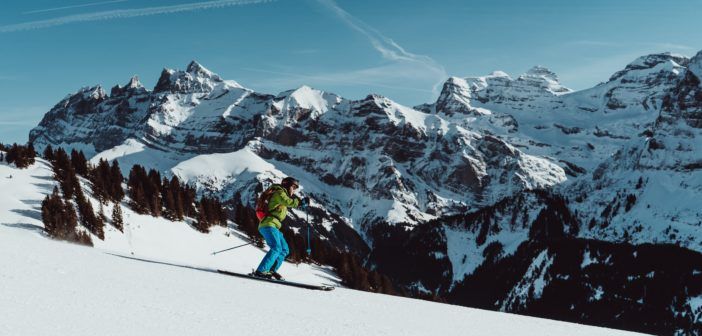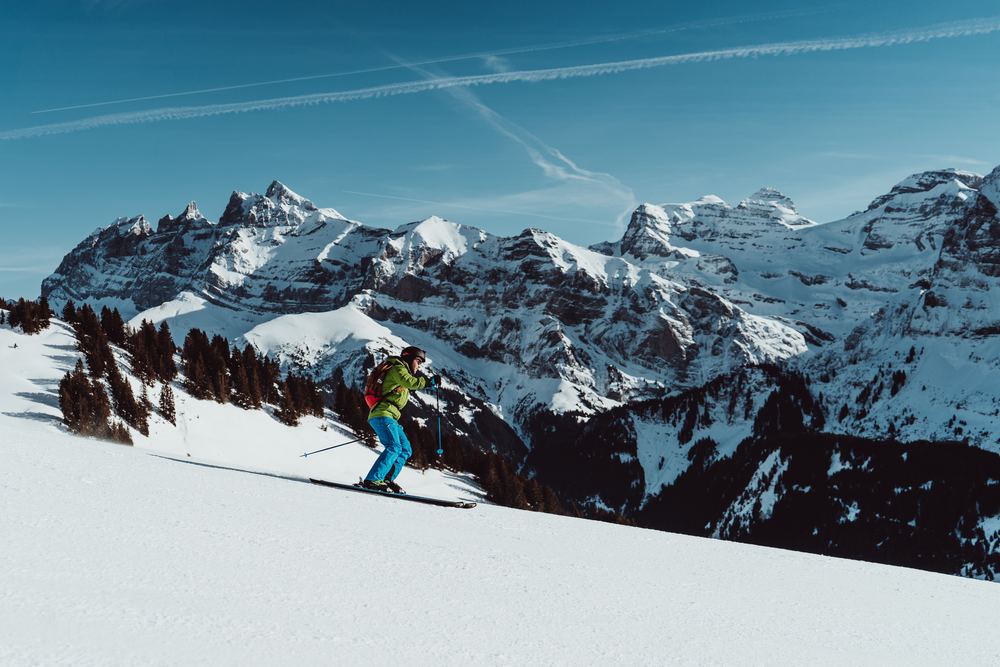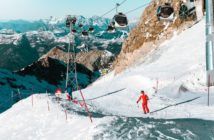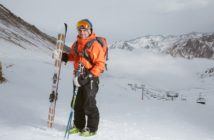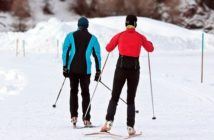Skiing for the first time is an experience. Often times, it’s easy to either love the sport or hate it. Regardless, after your first time on the slopes, you’ll likely come home with sore leg muscles.
If you ever want to get back on the mountain after that first adventure without feeling that ache, then you’ll need to implement some exercises and practices off the slopes, so as to prepare your body and hone those muscles to make your next experience all fun and less pain.
More work, you say? Wasn’t skiing itself enough work?
Worry not; these skiing exercises for legs are easy to fit into your daily life, and will help get you in shape both for your personal satisfaction and for the sport! Let’s dive in.
Contents
Strong Legs and Skiing: The Benefits
Aside from preventing aches, having strong legs can make you a better skier. In fact, your leg muscles are as essential to a good trip down a slope as any of the ski equipment you bring along.
The way you shift your hips will provide greater control over the direction you ski in, your speed, and can prevent injuries should you take a tumble.
Not only that but when you strengthen your leg muscles, you develop better balance.
According to Strong Skier, improving your balance through improved leg strength teaches your muscles to work together rather than independently, thereby allowing you to ski more smoothly and make it down the slope without falling on your face.
Starting Towards Leg Care
Before we dive into the exercises themselves, it’s important to note there are steps you can take on the mountain to best use your leg muscles before you start training.
Basic skiing care will help combat soreness and develop good habits that will follow you through your experiences as a skier.
Stretch Out In Advance
Be sure to warm up before undertaking any sort of exercise. Skiing is often seen as more of a hobby than concentrated gym time, so you may forget to stretch yourself out before hitting the slopes.
However, by taking fifteen minutes to prepare yourself for the hours you’ll spend outside, you’ll avoid being uncomfortably sore after your runs.
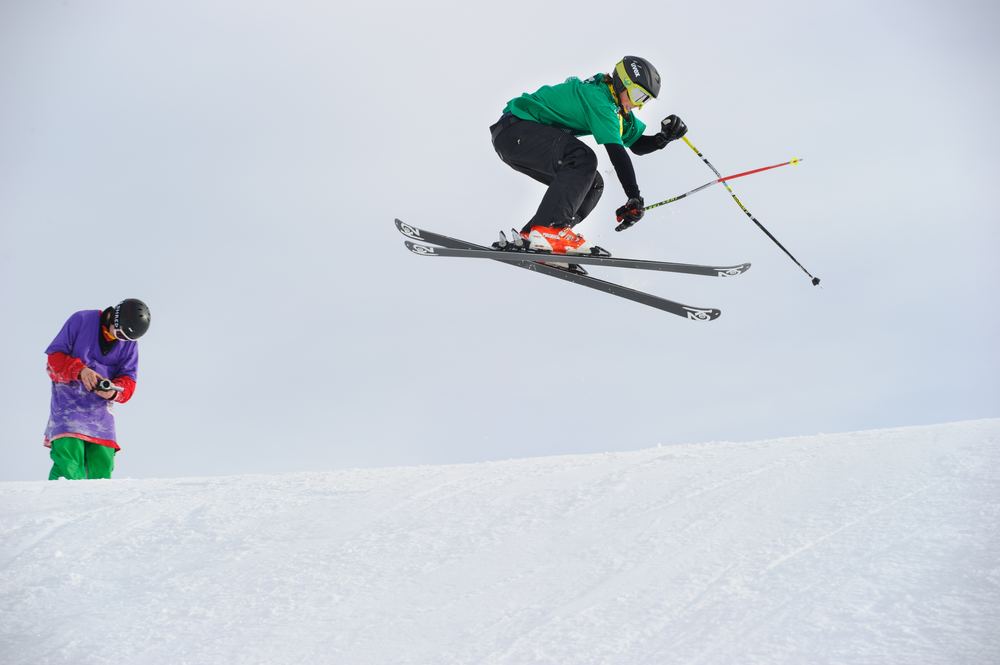
Stretching exercises for skiing are just like stretches for any other sport; basic warm-ups that stretch your hamstrings, hips, and glutes will ensure that you’re ready to start your runs.
Dress Well and Warmly
Once you’ve limbered your muscles, you should make sure they won’t seize up in the cold. As such, you’ll need to dress in layers before hitting the slopes.
Look for clothing that wicks away sweat and precipitation. Anything that keeps water away from your body will keep your skin and muscles from getting too cold.
After you’ve established a base layer of waterproof clothing, add on a polyester turtleneck and warm sweats, and then finish with a waterproof winter coat.
Whatever you do, try to avoid wearing cotton and denim on the ski slopes. Both of these fabrics will absorb your sweat and the water in the snow around you and will ensure that you get colder faster.
Fashionable? Yes. Good for keeping your muscles warm and strong? Not so much.
Embrace Your Comfort Zone
You should also take care not to overexert yourself in the initial few runs. You may feel adrenalized and excited, but overdoing it could lead to pulled muscles and a delayed return to skiing.
Take your time with your runs. Don’t get discouraged by the pace of your progress. Before you know it, you’ll have established the physical foundation you need in order to move to a ski park and perform tricks or to make your way down a challenging black diamond.
Drink Water
It is also essential that you drink water while you ski.
Your body does not have a great way to secure water, and on average, you’ll lose about three liters a day. That’s the case, of course, if you’re not exercising.
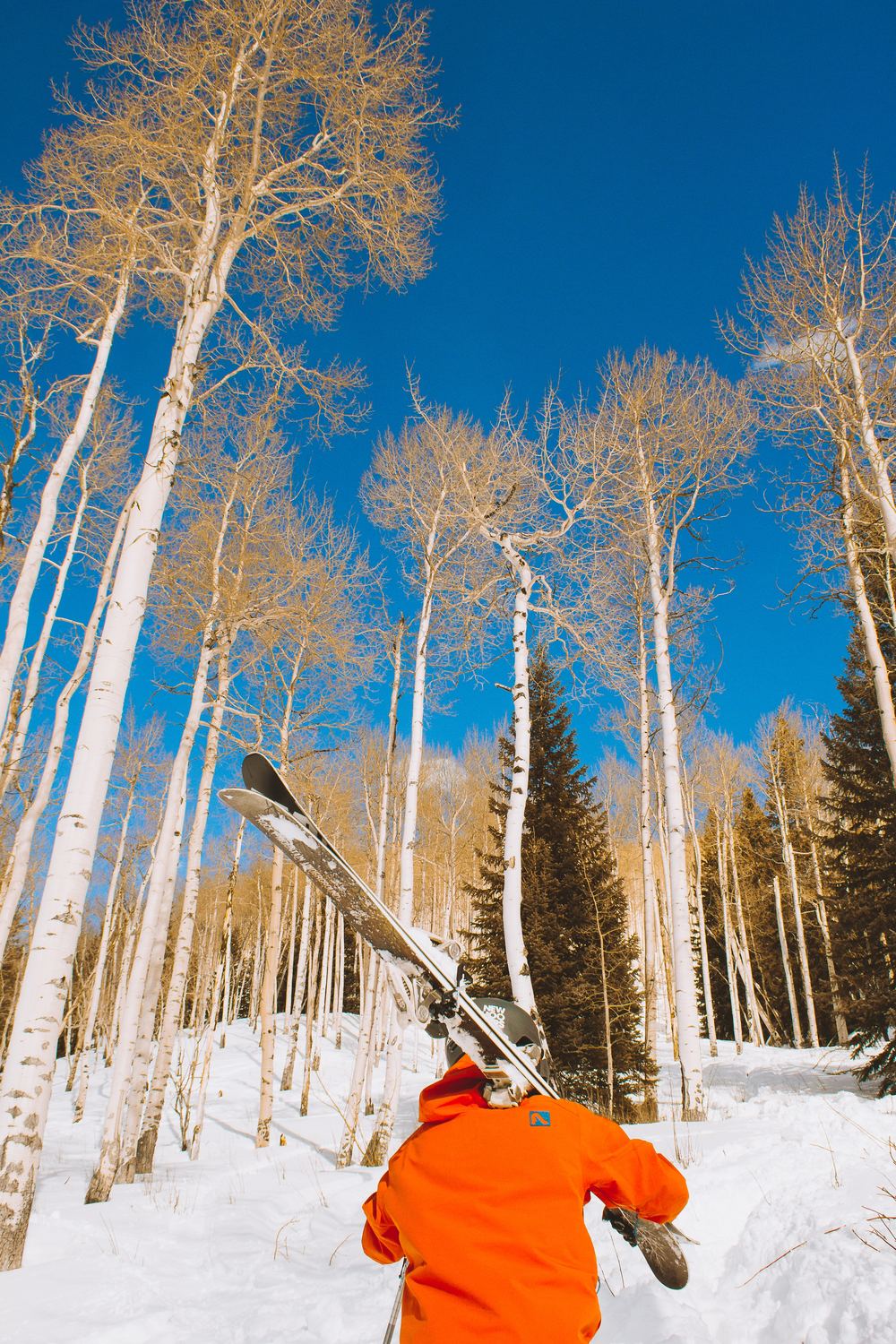
When you go skiing, especially in the initial few trips, you’ll be using muscles groups that have been underutilized, and your body won’t know how to react to the strain.
Take a water bottle onto the slopes with you or take frequent breaks so that you can stay hydrated, prevent dehydration, and limit the muscle pain you’ll feel when you return home.
Don’t Overdo It
After your initial few runs come to an end, you may not want the night to stop, and you may find yourself pursuing one last ride to cap off a trip.
This is an understandable urge. Soaring along on your skis is a freeing experience, and if you’re new to the sport, then you’ll want to hang onto that physical experience for as long as possible.
However, that adrenaline you feel may drive you to push too far. Always do your best to think ahead. There will be other ski trips in your future, and you don’t want to miss them because you’ve pulled a muscle or feel too sore to move.
Go ahead and skip that last run, like Lucy Macdonald of the Telegraph suggests, so that you can take another trip down the slopes some other day.
Stretch After You Finish
Such as with any exercise routine, it’s healthy for you to stretch both before and after you ski. Many of the warm-ups you completed before your runs can be repeated after you come off the slopes.
Cooling down like this tells your muscles that the exercise is over and that they can start to relax. If you don’t cool down like this, it’s possible that your muscles will seize up on your drive home.
Katie Blundell of Ticket to Ride recommends – for both skiers and snowboarders – lunges, squats, and stretches that gently relax the muscles in the neck and wrists while you cool down.
Once you’ve finished, you’ll be able to pack up your equipment, head on home, and worry less about waking up with sore legs in the morning.
This video shows some stretching exercises for skiing.
Embracing Leg Day: The Best Exercises for Skiing
Even if you choose to prepare yourself for skiing without added training to your leg muscles, you may find that the extra strength makes your trips down the slopes easier.
There are a number of ski leg workouts that you can do at home, which are both simplistic and provide fast results.
Balance is a key element in this sport, so workouts that emphasize balance will give you the best trips in the future, allowing you to go faster, for longer, and to maneuver around obstacles more effectively.
Squats
Outside of loosening up, you should find exercises that directly build up your muscle mass.
Squats are one of the best forms of exercise to undertake if you want to improve the way you ski because they force your leg muscles to mimic the skiing stance while also demanding the movement that skiing downhill requires.
Heather Sneglar of Red Bull emphasizes that it’s important to do squats properly, or else they’ll do more damage to your quad muscles than good.
In order to do an effective squat, consider the following:
- Keep your legs shoulder-width apart.
- Keep your hips beneath your shoulders – you want your back to create a straight line.
- Bend your knees until they’re at a ninety-degree angle with the floor.
- Straighten up again and repeat the motion for a reasonable amount of sets; two sets of twenty if you’re just starting out, with a steady increase in both reps and sets over time.
Squat Jumps
Similarly, squat jumps are a great way to vary up the squat routine, while using different muscles in your legs that will help you in the sport.
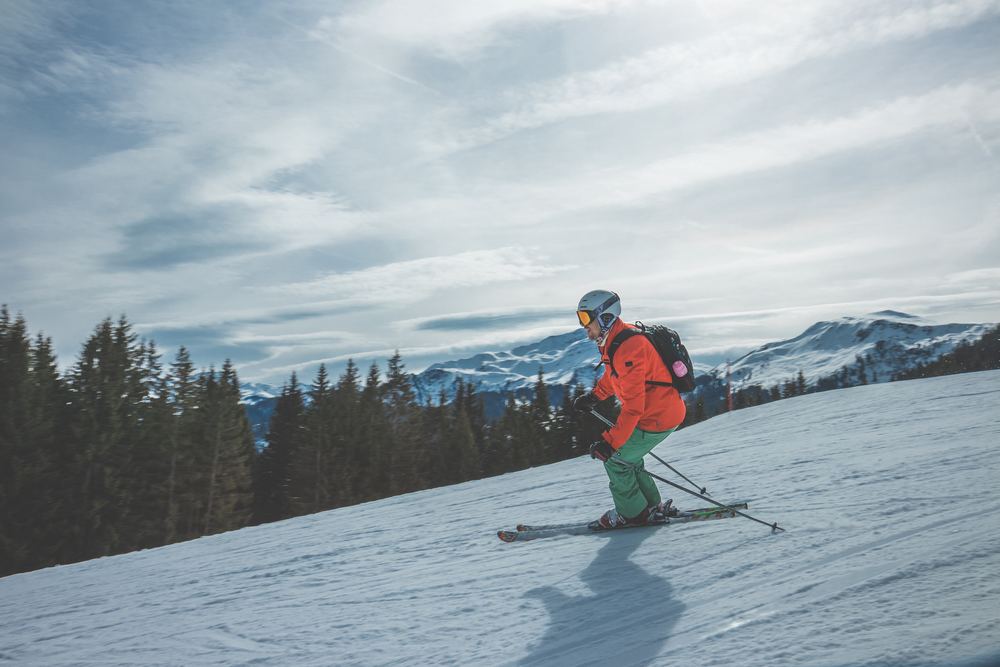
This variation on the squat will also expand the exercise to your glutes, which, in turn, will help you improve your balance in the long run.
In order to do a squat jump, you need to:
- Set yourself up in a standard squat position; keep your legs shoulder-width apart and your spine straight.
- Bend your knees until they’re at a ninety-degree angle with the floor.
- Stop here and hold!
- After three to five seconds, push off the ground and jump into the air.
- Repeat the motion in a reasonable number of reps and sets; two sets of ten if you’re starting out, with a steady increase from there.
Wall Sits
Lydia Stephens of Livestrong says to exercise the quads through a slower and more controlled version of the squat, known as a wall sit.
This position will help you build up the endurance to ski for extended periods of time, as wall sits require you to hold that ninety-degree squat position for roughly thirty seconds or longer.
Setting up a wall sit requires many of the same positioning maneuvers as a squat:
- Find a strong wall and place your back parallel against it.
- Slide down the wall, keeping your feet planted shoulder-width apart.
- Bend your knees until they’re at a ninety-degree angle.
- Keep your thighs parallel to the floor for thirty seconds.
- Stand straight again, rest for ten seconds, and repeat.
Like with other exercises on this list, be sure to increase your hold time at a reasonable pace.
Planks
Speaking of endurance: planking is a great way to build up your muscles and ensure that you can ski for longer.
While planking more directly impacts your abdominal muscles than your legs, the stretch of your legs and the pressure on your abs force your body to work together in order to maintain a balance.
As such, planking turns out to both strengthen your legs and ensure that you can balance your body more effectively on the slopes.
In order to complete a successful plank, follow the Competitor’s advice:
- Lie down on your belly on the floor.
- Position yourself as though you’re going to do a push up: lift up on your toes and brace yourself on your elbows, keeping your elbows at a ninety-degree angle.
- Look straight at the floor, ensuring that your spine remains in a straight line.
- Hold this position for thirty seconds, as a beginner, increasing the hold time by five seconds every time you repeat the exercise.
- As a beginner, try to complete seven reps and two sets of planks, increasing as is reasonable over time.
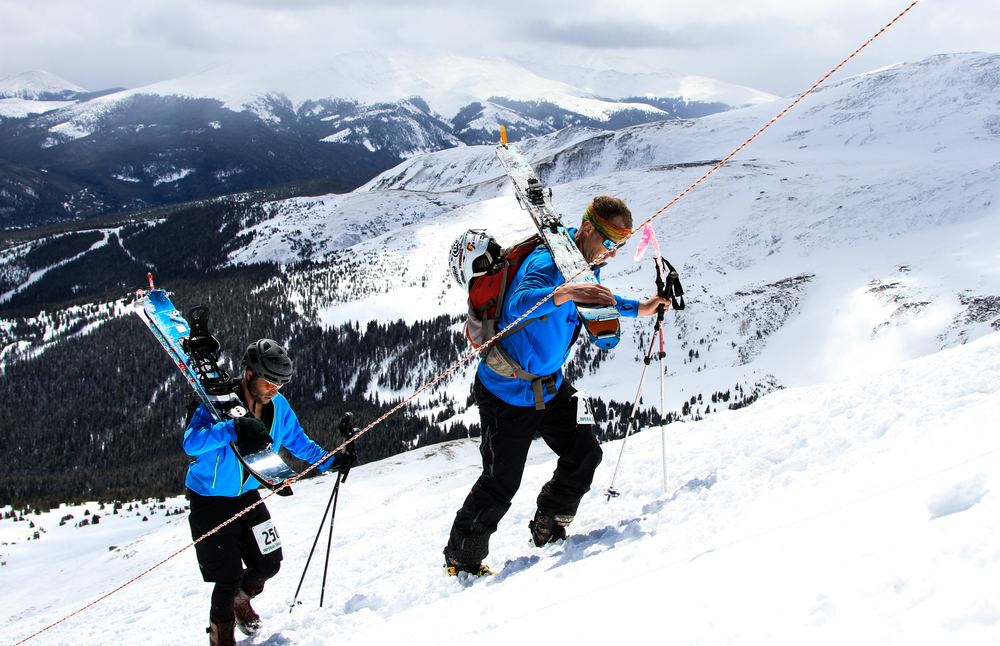
Lunges
Heather Snelgar of Red Bull also recommends lunges as part of your muscle building routine.
Lunges, of course, are one of the best workouts for skiing you can do. They also mimic the motion of skiing and keep your body moving.
In order to do a proper lunge, you should:
- Stand up straight with your feet together.
- Step forward, bending your forward knee until your back knee barely touches the floor.
- If the motion or stretch of your muscle hurts, stop and re-adjust.
- Once you feel your knee touch the floor, pull out of the position and repeat on the opposite side.
- Complete twenty reps of these lunges in three sets as a beginner, increasing as is reasonable over time.
Hiking
And yet, sometimes the best leg strength exercise you can get is to walk. More specifically, you can take your exercise routine outside in a way that doesn’t require you to layer up and brave the snow.
Go for a hike, a walk, or a jog at least three times a week. You’ll find that, the next time you ski, it’ll be easier to spend extra time on the slopes, thanks to the casual exercise that you’ve been doing.
This also helps you develop an understanding of different terrain, which can assist you when hiking up the slopes after a successful run.
Here’s a video showing some exercises for skiing.
Skiing can be a truly rewarding sport that gets you out of the house in the winter months. It also helps you explore a kind of exercise that doesn’t necessarily feel like exercise.
If you want to make your experience on the slopes more rewarding, these leg exercises and tips will ensure you are strong enough to accomplish all of your wintry goals.

